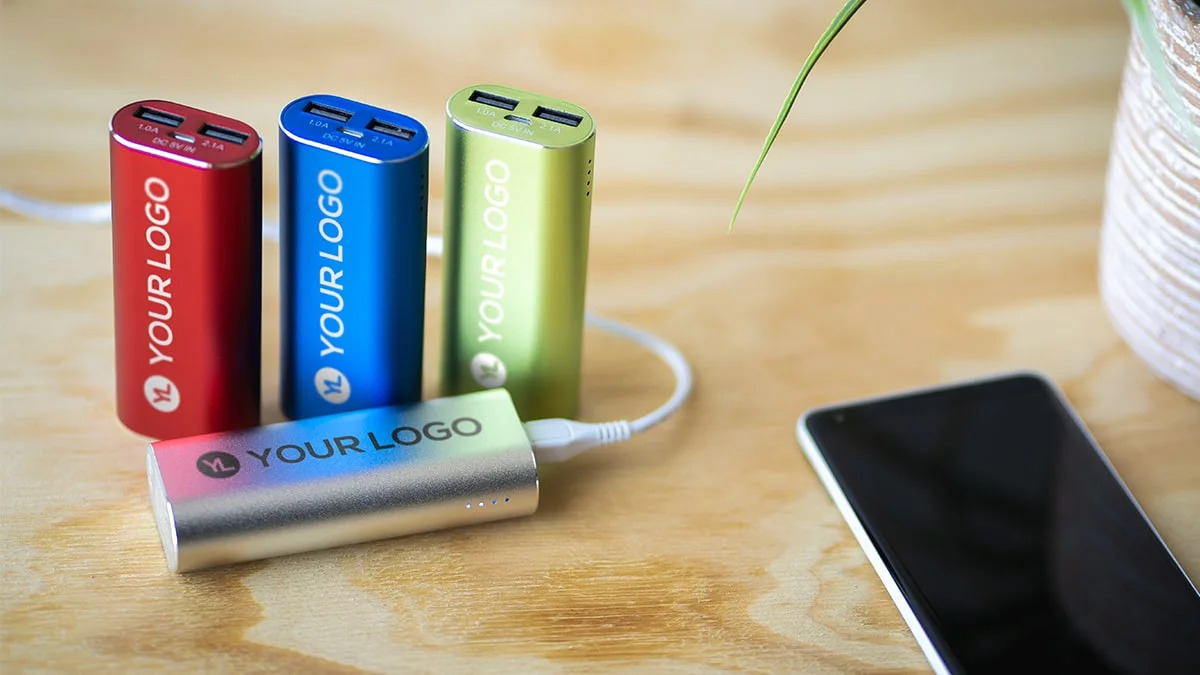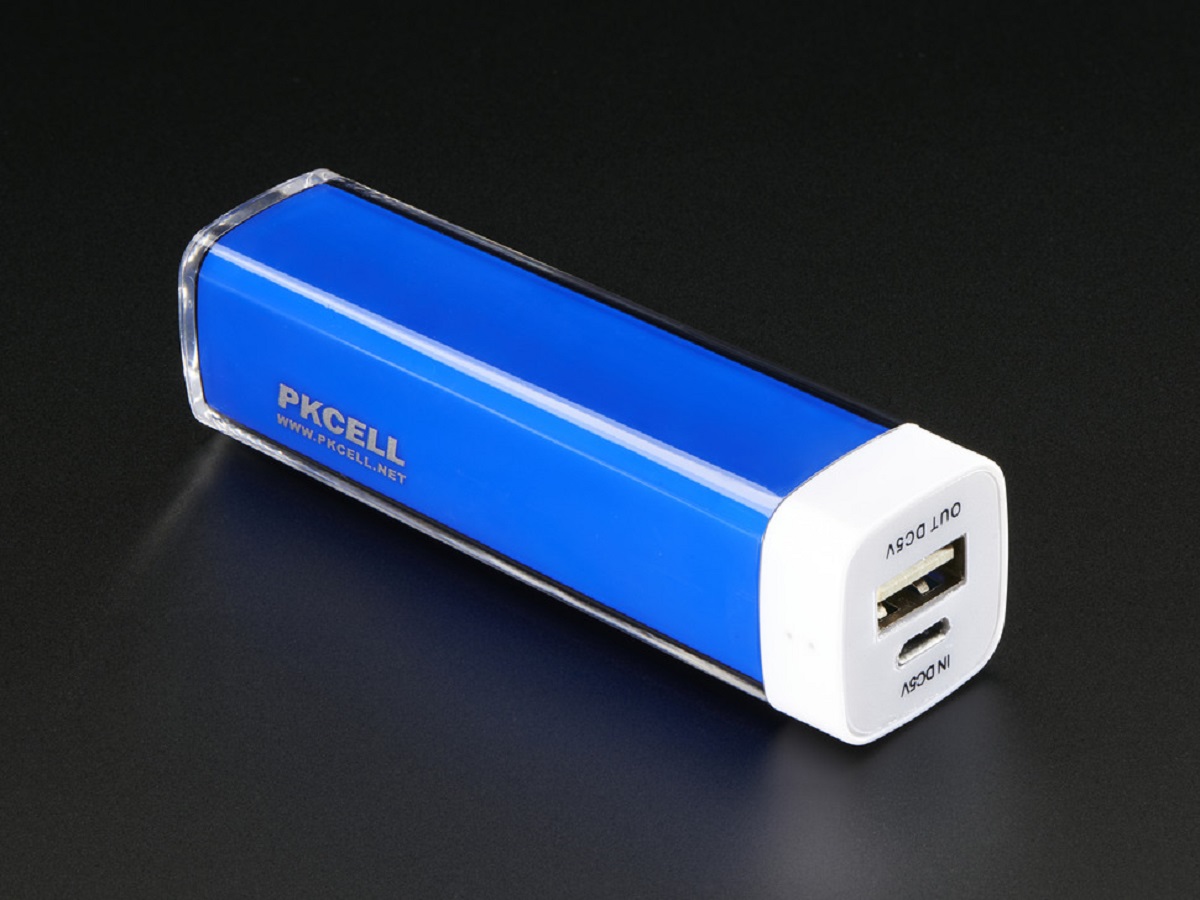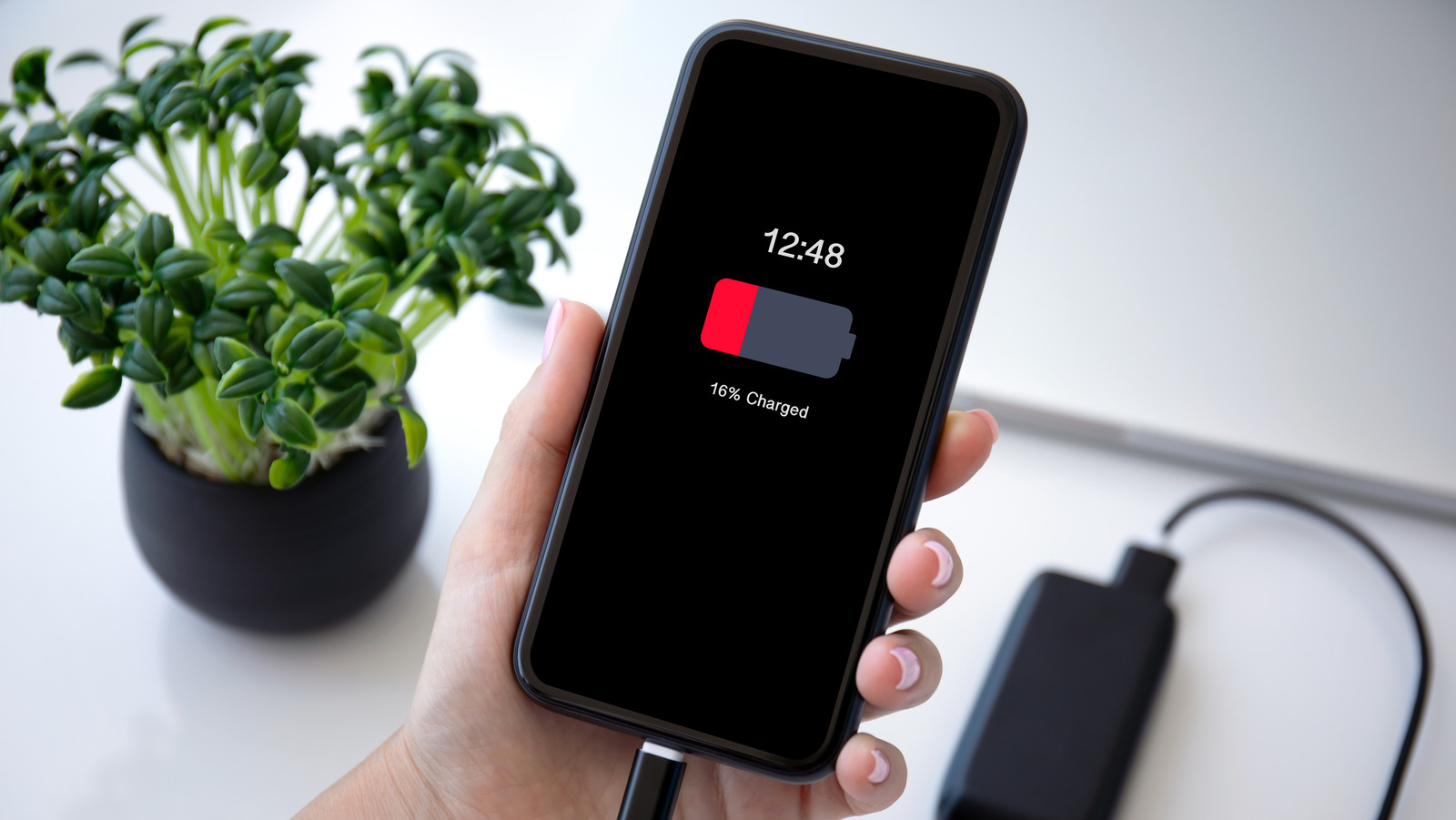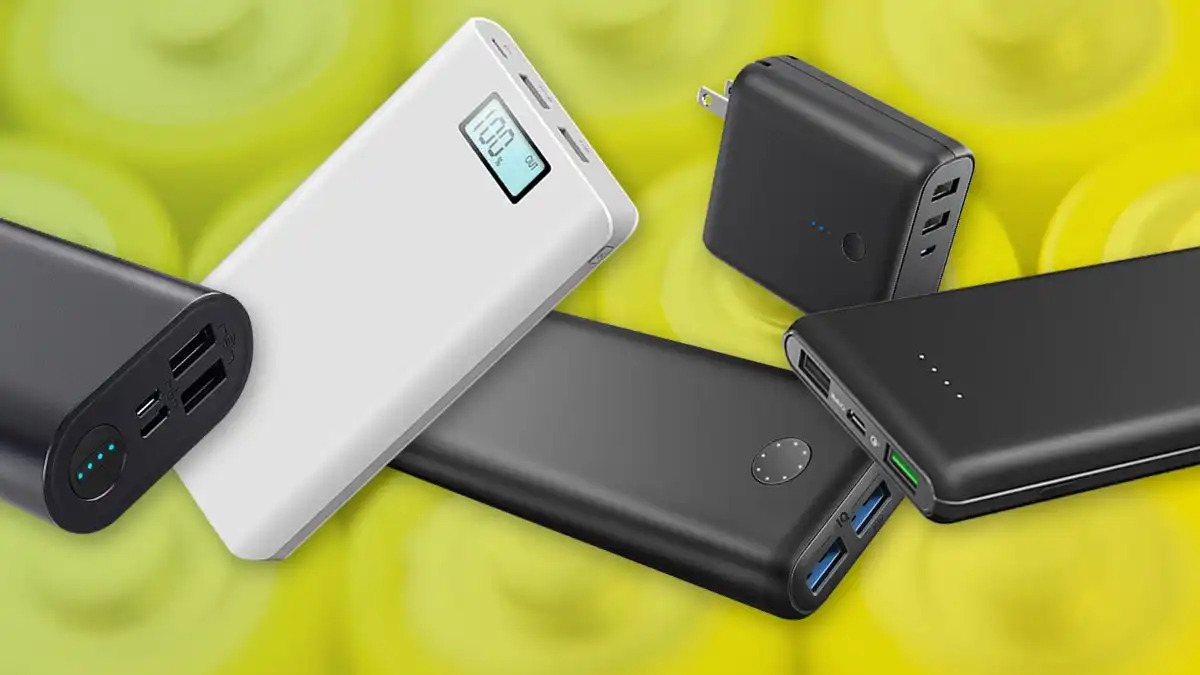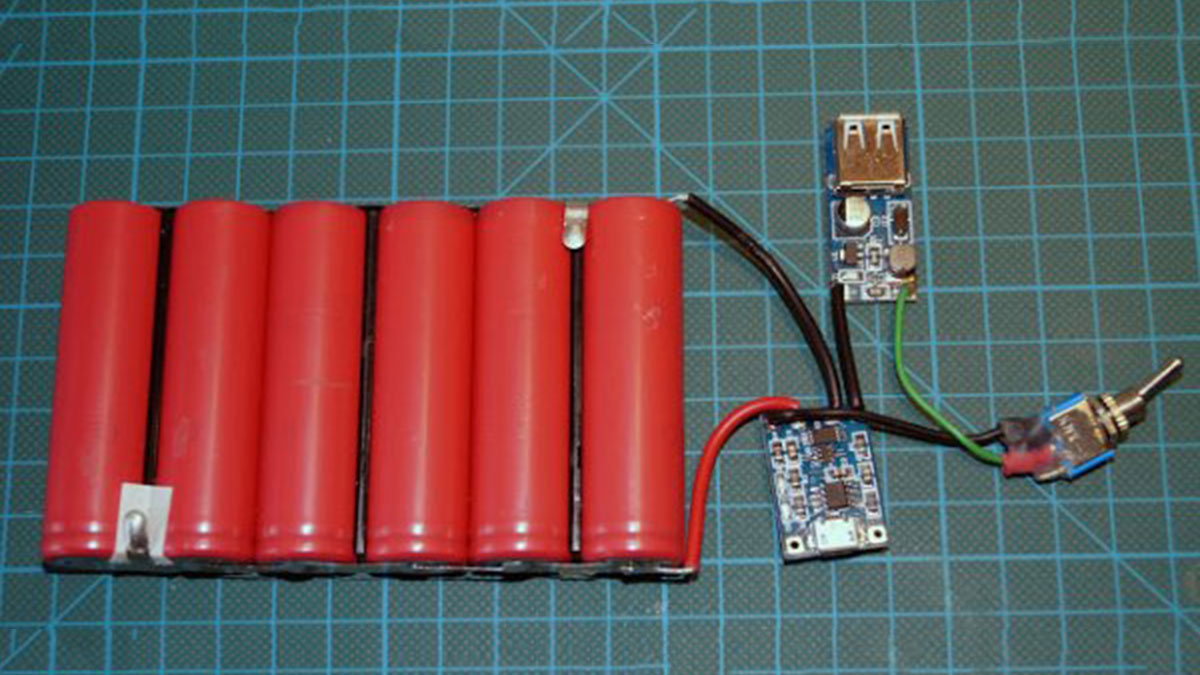Introduction
Power banks have become an essential accessory for anyone on the go. Whether you’re traveling, attending meetings, or simply out and about, having a power bank ensures that your devices stay charged and ready for use. However, if you’re using a power bank for the first time, you may have some questions about how to properly utilize this portable charging device.
In this guide, we will provide you with step-by-step instructions on how to use a power bank effectively. We will cover everything from checking the power bank to understanding its specifications and troubleshooting any common issues that may arise. By following these simple yet important guidelines, you can make the most out of your power bank and keep your devices powered up whenever you need them.
So, whether you are a frequent traveler, a busy professional, or anyone who relies on their gadgets, this comprehensive guide will equip you with the knowledge needed to harness the full potential of your power bank. Let’s dive in and explore how to use a power bank for the first time!
Checking the Power Bank
Before using your power bank, it’s essential to perform a quick check to ensure that it’s in good working condition. Here are the steps to follow:
1. Inspect the physical condition: Start by examining the power bank for any signs of physical damage. Look for cracks, dents, or bulging batteries. If you notice any issues, refrain from using the power bank and contact the manufacturer for assistance.
2. Check the power bank’s capacity: Power banks come in different capacities, usually measured in milliampere-hours (mAh). Locate the capacity information on the power bank itself or in the user manual. Knowing the capacity will help you understand how many times you can charge your device fully.
3. Confirm the power bank’s charging indicator: Most power banks have LED indicators to display the remaining battery power. Check if the power bank has a charging indicator and familiarize yourself with the different indicators and what they mean. This will allow you to monitor the power bank’s charge level more effectively.
4. Ensure compatibility: Consider the devices you plan to charge with the power bank and check whether they are compatible. Ensure that the power bank has the necessary ports and connectors to support your devices. Additionally, confirm if your power bank supports the charging voltage required for your devices.
By checking these factors, you can ensure that your power bank is in good condition and compatible with your devices. This not only maximizes the efficiency of your charging experience but also helps in extending the lifespan of your power bank.
Charging the Power Bank
To use your power bank, you need to charge it first. Here’s how to properly charge your power bank:
1. Use the provided cable: Locate the charging cable that came with your power bank. It is usually a USB cable that can be connected to a power source, such as a wall adapter or a computer’s USB port. Make sure to use the cable provided by the manufacturer, as using incompatible cables may lead to slower charging or even damage to the power bank.
2. Connect the cable: Connect one end of the cable to the charging port on the power bank. The charging port is typically labeled as “In” or “Input.” Ensure a secure connection to prevent any interruptions during the charging process.
3. Connect the other end of the cable: Plug the other end of the cable into a power source. If you’re using a wall adapter, connect it to a wall socket. If using a computer’s USB port, make sure the computer is powered on. The power bank will start charging automatically once the cable is connected properly.
4. Monitor the charging process: The power bank should have an LED indicator that shows the charging status. The indicator may blink, change colors, or remain steadily lit to indicate different stages of the charging process. Refer to the user manual to understand the specific meaning of the LED indicators for your power bank model.
5. Leave the power bank undisturbed: It is crucial to allow the power bank to charge fully without interruption. Avoid disconnecting and reconnecting the cable during the charging process, as it may affect the charging speed or cause damage to the power bank.
6. Charge until full: Let the power bank charge until it reaches 100% capacity. Depending on the power bank’s capacity and the power source’s output, the charging time may vary. Typically, it takes a few hours to fully charge a power bank.
By following these steps, you can ensure that your power bank is charged properly and ready for use. Once it is fully charged, you can disconnect it from the power source and use it to charge your devices on the go.
Connecting the Power Bank to a Device
After charging your power bank, you can connect it to your device for convenient on-the-go charging. Here’s how to do it:
1. Choose the appropriate cable: Determine the type of cable required to connect your power bank to the device you want to charge. Power banks typically come with USB cables, but depending on your device, you may need a micro USB, USB-C, or Lightning cable. Ensure that you have the correct cable for your device.
2. Connect one end of the cable to the power bank: Plug the appropriate end of the cable into the output port of the power bank. The output port is usually labeled as “Out” or “Output.” Ensure a secure connection to avoid any interruptions during charging.
3. Connect the other end of the cable to your device: Plug the opposite end of the cable into the charging port of your device. Make sure to insert it properly and securely, as a loose connection may result in slower charging or intermittent power supply.
4. Activate the power bank: Some power banks have a power button or switch that needs to be pressed to activate the charging output. Check if your power bank requires this step and ensure that it is turned on before expecting the device to start charging.
5. Monitor the charging process: Once the power bank and device are connected, you should see a charging symbol or notification on your device’s screen. This indicates that the power transfer is active. You may also refer to the power bank’s LED indicator to monitor the power bank’s remaining capacity, as it will gradually decrease during the charging process.
6. Allow the device to charge: Let your device charge until it reaches the desired battery level. The charging speed may vary depending on the power bank’s capacity, the device’s battery capacity, and the power consumption of the device while in use. For optimal charging, it is recommended to keep the device unused during charging.
By following these steps, you can effortlessly connect your power bank to your device and ensure a reliable power supply when you need it. It’s important to note that while connected, the power bank will continue to provide power until it is depleted or disconnected from the device.
Charging Multiple Devices
If you have a power bank with multiple output ports, you have the option to charge multiple devices simultaneously. Here’s how to effectively charge multiple devices with your power bank:
1. Check the power bank’s capacity and output ports: Take a look at your power bank’s specifications to determine its total capacity and the output power of each port. This information will help you understand how many devices you can charge simultaneously and the charging speed for each port.
2. Use the appropriate cables: Ensure that you have the necessary cables for each device you want to charge. Depending on the devices, you may need different types of cables such as USB, micro USB, USB-C, or Lightning cables. Make sure the cables are compatible with your devices and the power bank’s output ports.
3. Connect the first device: Plug one end of the cable into the output port of the power bank and the other end into the charging port of the first device. Ensure a secure connection for uninterrupted charging.
4. Connect the second device: If your power bank has multiple output ports, connect the second device using a separate cable. Plug one end into the second output port of the power bank and the other end into the charging port of the second device.
5. Activate the power bank: If your power bank requires activation, ensure that it is turned on before expecting the devices to start charging. Refer to the power bank’s user manual for specific instructions on activation if necessary.
6. Monitor the charging process: Keep an eye on each device to verify that it is charging. Check the device screens for charging symbols or notifications. You may also refer to the power bank’s LED indicators to monitor the power bank’s remaining capacity as it gradually decreases during the charging process.
7. Charge until desired levels: Allow the devices to charge until they reach the desired battery levels. Remember that charging multiple devices concurrently may impact the overall charging speed, and it may take longer to fully charge each device compared to charging them individually.
By following these guidelines, you can efficiently charge multiple devices simultaneously using your power bank. It’s important to note that the total charging time and available power bank capacity will be divided among the connected devices. Keep that in mind to ensure that all devices receive sufficient charge.
Monitoring Power Levels
Monitoring the power levels of your power bank is crucial to ensure that it is always ready to provide a reliable charge to your devices. Here are some tips for effectively monitoring the power levels:
1. Check the power bank’s LED indicators: Most power banks have LED indicators that display the remaining battery power. The indicators may vary in color or blink in a specific pattern to indicate the power bank’s charge level. Refer to the user manual or the manufacturer’s guidelines to understand the meaning of the LED indicators for your specific power bank model.
2. Familiarize yourself with the power bank’s capacity: Understanding the capacity of your power bank, which is typically measured in milliampere-hours (mAh), will give you an idea of how many times you can charge your devices. Keep in mind that the actual number of charges may vary depending on the efficiency and power requirements of your devices.
3. Use a compatible charging app: Some power banks are compatible with smartphone apps that allow you to monitor the power bank’s charge level, estimated charging time, and other useful information. Check if your power bank has a compatible app and consider using it for a more detailed view of your power bank’s power levels.
4. Charge your power bank regularly: To ensure that your power bank is always ready for use, make it a habit to charge it regularly, especially after each use. Regular charging helps maintain the power bank’s capacity and ensures that it is ready to provide a sufficient charge when needed.
5. Keep an eye on the device’s battery level: When using a power bank to charge a device, it is essential to monitor the device’s battery level as well. Some devices display the power bank’s input, allowing you to keep track of how much charge it is receiving. This will help you determine if your device is charging properly and if additional charging is required.
By actively monitoring the power levels of your power bank, you can better manage your charging needs and prevent unpleasant surprises of unexpectedly running out of power. Keep an eye on the LED indicators, familiarize yourself with the power bank’s capacity, and make a habit of regular charging to ensure a reliable power supply whenever you need it.
Understanding Power Bank Specifications
When using a power bank, it’s important to understand its specifications to ensure optimal performance and compatibility with your devices. Here are some key specifications to consider:
1. Capacity (mAh): The capacity of a power bank refers to the amount of stored energy it can hold. It is typically measured in milliampere-hours (mAh). Higher capacity power banks can provide more charges for your devices but also tend to be larger and heavier. Consider your charging needs and the portability you require when selecting a power bank with an appropriate capacity.
2. Output voltage and current: The output voltage and current of a power bank determine how quickly it can charge your devices. Most power banks provide a standard USB output that delivers 5 volts (V). The output current is measured in amperes (A) and can vary between different power banks. Higher output currents result in faster charging speeds. Ensure that the power bank’s output voltage and current match or are compatible with your device’s charging requirements.
3. Input voltage and current: The input voltage and current refer to how the power bank itself is charged. It is important to use the correct charging cable and power source with matching voltage and current specifications to avoid damaging the power bank or experiencing slow charging. The input voltage and current are usually provided in the power bank’s user manual or specifications.
4. Number of output ports: Power banks come with different numbers of output ports, allowing you to charge multiple devices simultaneously. Consider how many devices you typically need to charge at once and choose a power bank with an appropriate number of output ports.
5. Additional features: Some power banks may have additional features such as fast charging capabilities, wireless charging, built-in cables, or even built-in LED flashlights. These features can enhance the convenience and versatility of the power bank but may also affect its size, weight, and price. Consider which additional features are important to you when selecting a power bank.
By understanding these power bank specifications, you can make informed decisions when choosing a power bank that suits your needs. Ensure compatibility with your devices, consider the charging speed, capacity, and additional features to find the power bank that will provide reliable and efficient charging for your devices, whether you’re at home, traveling, or on the go.
Tips for Extending Power Bank Life
To make the most out of your power bank and ensure its longevity, consider the following tips for extending its life:
1. Store it properly: When not in use, store your power bank in a cool and dry place. Avoid exposing it to extreme temperatures or humidity, as these conditions can affect the battery life and overall performance.
2. Avoid overcharging: Overcharging can degrade the battery life of your power bank. Once it reaches a full charge, unplug it from the power source to prevent unnecessary strain on the battery. Most power banks have built-in protection mechanisms to prevent overcharging, but it’s still advisable to disconnect it after achieving a full charge.
3. Charge it regularly: To keep the battery cells active and functioning optimally, it’s important to charge your power bank regularly, even when not in use. Aim to charge it at least every few months to maintain its functionality.
4. Avoid total discharge: Ideally, avoid completely discharging your power bank. Lithium-ion batteries, commonly used in power banks, prefer to be charged and kept at a partial charge. Do not let the power bank run out of power entirely before recharging it.
5. Use the correct charging cables and adapters: To ensure efficient and safe charging, always use the charging cables and adapters provided by the manufacturer or those specifically designed for your power bank. Using incompatible or low-quality cables can result in slow charging, overheating, or even damage to the power bank.
6. Avoid charging and discharging simultaneously: It’s best to avoid charging your power bank while simultaneously using it to charge a device. This can generate excess heat and put additional stress on the power bank’s internal components, leading to reduced battery life.
7. Handle with care: Treat your power bank with care to prevent accidental damage. Avoid dropping it, exposing it to water or other liquids, or subjecting it to physical stress. These actions can damage the internal components and reduce the overall lifespan of the power bank.
By following these best practices, you can extend the life of your power bank significantly. Remember to store it properly, avoid overcharging and total discharge, charge it regularly, use the correct cables and adapters, avoid charging and discharging simultaneously, and handle it with care. These simple steps will help you maximize the performance and longevity of your power bank, ensuring that it remains a reliable companion for keeping your devices charged on the go.
Troubleshooting Common Issues
While power banks are generally reliable, there may be times when you encounter some common issues. Here are some troubleshooting tips for addressing these issues:
1. Power bank not charging: If your power bank is not charging, ensure that the charging cable and power source are working correctly. Try using a different charging cable or power adapter to rule out any issues with the current set-up. Additionally, check if the charging port on the power bank is clean and free from debris, as this can impede the charging process.
2. Device not charging: If your device is not charging when connected to the power bank, confirm that the cables are fully inserted into both the power bank and the device’s charging port. Additionally, ensure that the power bank has sufficient charge. Some power banks have an auto-sleep feature that requires you to press a button to activate the charging output.
3. Slow charging: Slow charging can occur due to various factors, such as using an inadequate power adapter or cable, charging multiple devices simultaneously, or charging a device with a high power requirement. Check if you are using the correct charging cable and adapter and avoid charging multiple devices at once to improve the charging speed.
4. Power bank overheating: If you notice that your power bank is overheating during charging or use, disconnect it from the power source immediately. Overheating can be caused by various factors, including excessive usage, charging in high temperatures, or using the power bank with incompatible devices. Allow the power bank to cool down before using it again and ensure proper ventilation during charging.
5. Incorrect capacity display: Sometimes, the power bank’s capacity display may not accurately reflect the remaining charge. This could be due to calibration issues or inaccuracies in the power bank’s circuitry. If this occurs, manually monitor the LED indicators or consider using a compatible app (if available) to gauge the actual remaining capacity of the power bank.
6. Power bank not turning on: If your power bank fails to turn on, check if it has sufficient charge. If the power bank has been unused for an extended period, it may require charging before it can be activated. Try connecting it to a power source and leave it for a while before attempting to turn it on again.
7. Battery degradation over time: Over time, the battery capacity of your power bank may gradually decrease. This is a natural process and occurs with most rechargeable batteries. If you observe a significant decrease in capacity, consider replacing the power bank with a new one to ensure optimal performance.
If you encounter persistent issues with your power bank that cannot be resolved through troubleshooting, it is recommended to contact the manufacturer’s customer support or refer to the user manual for further assistance. They can provide specific guidance and solutions tailored to your power bank’s model and specifications.
Conclusion
Using a power bank for the first time may seem daunting, but with the right knowledge and understanding, it becomes a simple and convenient process. By following the steps outlined in this guide, you can effectively check, charge, connect, and monitor your power bank to ensure a reliable power supply for your devices.
Remember to check the physical condition of your power bank, confirm its capacity, and understand the charging indicators. When charging the power bank, use the provided cable, connect it to a power source, and monitor the charging process until it reaches full capacity.
When connecting the power bank to your devices, ensure compatibility, use the appropriate cables, and activate the power bank when necessary. Keep an eye on the charging process and device battery levels to ensure efficient and thorough charging.
Additionally, monitoring the power levels, understanding power bank specifications, and following best practices for extending power bank life will help you get the most out of your device. Regularly charging your power bank, storing it properly, and handling it with care will contribute to its longevity and reliability.
Should you encounter any issues along the way, refer to the troubleshooting tips provided to address common problems such as charging or connectivity issues, slow charging, overheating, and inaccurate capacity display.
With these insights and guidelines, you can confidently utilize your power bank, knowing how to maximize its functionality and keep your devices powered up whenever and wherever you need them.







